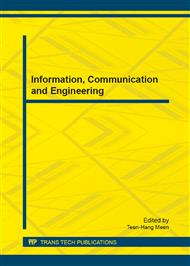p.477
p.485
p.491
p.497
p.502
p.507
p.512
p.518
p.527
Effect of Music Listening on Frontal EEG Asymmetry
Abstract:
Frontal EEG asymmetry has been recognized as a useful method in determining emotional states and psychophysiological conditions. For the current research, resting prefrontal EEG was measured before, during and after listening to sad music video. Data were recorded and analyzed using a wireless EEG module with digital results sent via Bluetooth to a remote computer for further analysis. The relative alpha power was utilized to determine EEG asymmetry indexes. The results indicated that even if a person had a stronger right hemisphere in the initial phase a significant shift first occurred during audio-video stimulation and was followed by a further inclination to left EEG asymmetry as measured after the stimulation. Furthermore the current research was able to use prefrontal EEG to produce results that were mostly measured at the frontal lobe. It was also able to provide significant changes in results using audio and video stimulation as to previous experiments that made use of audio stimulation. In the future, more experiments can be conducted to obtain a better understanding of a person’s appreciation or dislike toward a certain video, commercial or other multimedia contents through the aid of convenient EEG module.
Info:
Periodical:
Pages:
502-506
Citation:
Online since:
February 2013
Authors:
Price:
Сopyright:
© 2013 Trans Tech Publications Ltd. All Rights Reserved
Share:
Citation:


